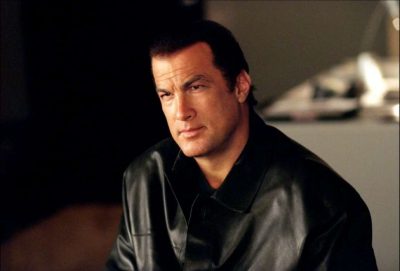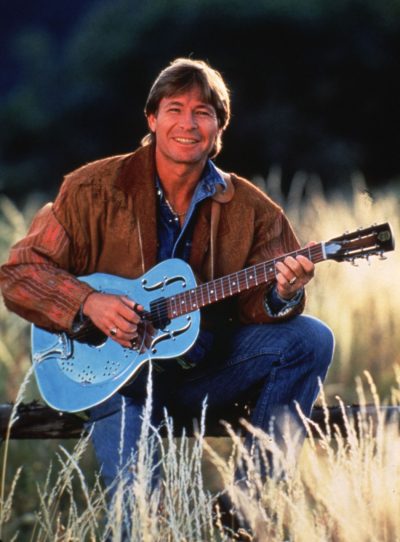Aikido in TV series –
Hollywood’s take on Aikido is mostly not accurate, so do not put too much notice on what and how they are teaching Aikido in the below videos. Some parts of the videos, like the dojo, clothing, and people practicing in the background is accurate, but most of the teaching has been dramatised. Hollywood struggles with the idea that aikidoa are not in competition.
The Good Fight
The Man in the High Castle
Man in the High Castle from michael hilow on Vimeo.
The Walking Dead
Aikido in the Movies –
Star Wars –
When George Lucas was in the creation of the concept of the Force of Star Wars he did not just made up something out of the blue. As far as we know, it was his intention to mix a good number of religions and belief systems to create something for his movie(s). He tried to find something common in the religions existing not so far away, i.e. on Earth, but at some point he realized that if he was to mix the major religions of the world he couldn’t be too specific when describing the Force. So the Force became a bit mystical, magical and hard to explain in detail but easy to understand as a whole. Why I think it is easy to understand? Because we had known the concept long before Star Wars: The Force is very similar to the concept of Ki in Aikido. In fact, the Force is highly based upon Ki, even in its name. Ki, which is also known as Chi (or Qi) in China, and Prana in India (and they mean the same about it more or less), can loosely be translated as ‘Life Fore’c. Obviously, the concept of Ki is far richer than the description by these two words but, at the moment and to me, Life Force describes it in an easy-to-understand manner and it also looks mystical, magical enough, given that I haven’t grasp its meaning and essence completely yet. I know that Ki “flows”. I know that by using Ki, we can extend ourselves beyond our physical selves. Just like when Luke and others use the Force.
Lucas must have been very interested in Japanese culture and, particularly, the world of Akira Kurosawa whose movie The Hidden Fortress served as a basis for the Star Wars film The New Hope. The Hidden Fortress is similar to Star Wars at several points. Most of the characters in Kurosawa’s film have corresponding characters in Star Wars. There is a princess who is hiding, there is someone very similar to Han Solo (played by Toshiro Mifune), there are the two low-ranked characters (R2D2 and C3PO’s originals) from the point of view the movie is shown. In The Hidden Fortress, all of them cross enemy territory together, just like the main characters in The New Hope and subsequent SW movies. But if purely considering how the movie is presented, we can easily notice that the cross fading effect of Star Wars (wiping the screen to move from one scene to another) is present in The Hidden Fortress and in other Kurosawa movies as well. That is a definite, proven link to Japan where the Ki is strong.
We can also compare the use of the Force with Aikido’s movements. There are a number of photos and a lot of videos about O-Sensei which show him using Ki almost exactly the same way Jedi use the Force. He raises his arm, points with his fingers, moves his palm towards the attacker and they are down in no time, without any physical connection. They can even stay down without actually being touched. The connection is achieved before any physical connection could take place, the ‘presence’ of a person, his Ki/Chi/aura interacts with the other person. Koichi Tohei’s Ki Aikido emphasises Ki more than other aikido branches, there are even Ki tests as parts of grading, if my information is correct. There are two things that seem to be different in Star Wars and Aikido though: 1. I don’t remember hearing about the Hara (centre of gravity, One Point: a point couple of inches below the navel, inside the body) as the source of Ki, from where the Ki energy originates. Midichlorian must have come from another source of Lucas’s. 2. As far as I know, Ki only can’t turn a dice to the number we want to be upwards :), but it might be the case that my Ki level is so low that I can’t even imagine this kind of unity with the Universe, in which moving objects without physical contact is possible.
Let’s consider light sabres now. Their use highly resembles the use of a katana (Japanese sword) or bokken (wooden sword). Light sabres are often held with two hands, just as Japanese swords are. I’m sure that iaido, kendo, aiki ken, aiki jo had a lot to do with the concept and use of a light sabre (and let’s forget for a second that light sabre fights are choreographed to look nice on camera, and that tennis and golf are also sources of how light sabres are used). The sword was an integral part of a samurai’s life; it was in the centre just as light sabres are in the centre of Jedi and Sith life. The use of light just makes it more prominent that you can have the Force and all that but it is the light sabre that is visually in the centre of visual attention. In Japanese fencing (kendo, etc.), when using the sword it has to be your extension. You should be the sword, be the cutting edge and the sword should be a part of you. Be one with the sword and you will be much more effective, flowing; you and your katana will move in harmony. If you take the light sabre, it is visually an extension of the body, just remember how Jedi draw a light sabre: in their inactive state, they are just a piece of metal, but when activated, they quickly extend into a sword that can engage with the opponent’s weapons. These thoughts about the light sabre are my own ideas, I can’t confirm them by quoting Lucas, but even if they are not true, I think, the ideas that everything can be connected and everything can make sense in a context are still true.
What about the Jedi? The name itself comes from the Japanese words “Jidai Geki” which translate as “period adventure drama.” Maybe it’s my limited knowledge of the English language but, for a while, I didn’t know what a period drama was. Then I learned that it was a drama set in a certain age or era, and Jidai Geki is actually a kind of TV soap opera that is set in the samurai days. So Jidai geki basically means samurai films, and to interpret the “period” part of the phrase, here’s an example: “Meiji jidai” means “Meiji period”. Lucas had been in Japan before creating the first Star Wars movie and he simply liked the words and the name of the Jedi order was born.
Probably it’s just a coincidence that the human name Jedi means “Beloved by God” and has a Hebrew origin. On the other hand, in Haitian Creole, Jedi means Thursday :).
Since 2001, Jedi is an officially recognised religion, too. As the whole concept of the Jedi order was based on different religions and traditions, turning Jedi into a proper religion, I guess, was quite straightforward. The Jedi religion has 16 teachings, some of them are following:
- 13. Jedi use the Force only when it is necessary. We do not apply our abilities or powers to boast or be prideful. We use the Force for knowledge, and exercise wisdom and humility in doing so, for humility is a trait all Jedi must embody.
- 14. We as Jedi believe that love and compassion are central to our lives. We must love each other as we love ourselves; by doing this, we envelope all life in the positive energy of the Force.
- 15. Jedi are guardians of peace and justice. We believe in finding peaceful solutions to problems, gifted as we are we remain negotiators of the utmost ability. We never negotiate out of fear, but never fear to negotiate. We embrace justice, protecting and preserving the fundamental rights of all living creatures. Empathy and compassion are vital to us; it allows us to comprehend the wounds caused by injustice.”
Do these points remind you to the teachings of a certain martial art we practice? Yes, it’s like aikido’s teachings. If you study other martial arts (with long history) you can also see the above teachings in those martial arts as well, but that will be the topic of another post some time later.
The concept of the Jedi order is highly based on the Samurai order. Think about honour, loyalty, swords, meditation, etc. Jedi and samurai, aikido, traditional martial arts, religions, traditions, etc: They are all very similar and most of them have love (ai) in their centres, it’s just a bit of difference in interpretations with the influence of various cultures/situations on them.
Now, what about the Dark side? It’s the other half of the ancient duality of light-dark/day-night/good-bad. If you are on the dark side, you don’t use the Force to what it’s meant to be used for. It’s against others, it’s against the order of the universe, it’s only for yourself which ultimately leads to being against yourself (a Sith might be feared which might look like respect but definitely not love). It’s exactly the same thing as when martial artists don’t have control over their ego (and the temptation of the Dark side is always there), and when martial artists use their technique (Force) against others, with no particularly beneficial purpose. If you find yourself resisting and frustrated in aikido training, be aware that it is the temptation of the Dark side (your own ego/devil/anger/etc.). The call of the Dark side is my greatest enemy in a training, that’s for sure. The Dark side is still based on samurai; just have a look at the costume of this website
Aikido in the Movies: Sources:
- https://onlineaikido.com/experts-comment.html
- https://www.aikiweb.com/forums/archive/index.php/t-374.html
- https://wiretap.area.com/Gopher/Library/Media/Sci-Fi/starwars.err
- https://www.roguetrader.com/~brandon/StarWars/BadGuide.html
- https://www.geocities.com/tokyo/ginza/3802/cks/essay.html#swars
- https://www.quantumlight.com/theforce/writings/force/the_force.htm
- https://en.wikipedia.org/wiki/The_Hidden_Fortress
- https://www.starwars.com/collecting/news/misc/news20070213.html
- https://boards.theforce.net/The_Star_Wars_Saga/b10456/20106637/?4
- https://www.meaningoflife.i12.com/qi.htm
- https://www.twinsoulz.f2s.com/pdf/reiki/ki.pdf
- https://www.magickaschool.com/forum/viewtopic.php?t=5067
Steven Seagal –
Steven Seagal is a striking and somewhat boyishly handsome looking (often with ponytail) and usually impeccably dressed action star who burst onto the martial arts film scene in 1988 in the fast-paced Warner Bros. film Above the Law (1988).
Steven Frederic Seagal was born in Lansing, Michigan, to Patricia Anne (Fisher), a medical technician, and Samuel Seagal, a high school math teacher. His paternal grandparents were Russian Jewish immigrants, and his mother had English, German, and Dutch ancestry. The enigmatic Seagal commenced his martial arts training at the age of seven under the tutelage of well-known karate instructor and author Fumio Demura, and in the 1960s commenced his aikido training in Orange County, CA, under the instruction of Harry Ishisaka. Seagal received his first dan accreditation in 1974, after he had moved to Japan to further his martial arts training. After spending many years there honing his skills, he achieved the ranking of a 7th dan in the Japanese martial art “aikido” and was instructing wealthy clients in Los Angeles when he came to the attention of Hollywood power broker Michael Ovitz.
Ovitz saw star value in the imposing-looking Seagal. The high-octane action movie genre was in full swing in the late 1980s, and Seagal’s debut movie, “Above the Law”, was wildly received by action fans and actually received some complimentary critical reviews. He followed up “Above the Law” with another slam-bang thriller, Hard to Kill (1990), as a cop shot in an ambush by the mob who revives from a coma to take his revenge. The movie also starred Seagal’s wife at the time, leggy Kelly LeBrock, who was married to him from 1987 to 1996 and is the mother of three of his children. His next outing was battling voodoo-using Jamaican drug “posses” in the hyper-violent Marked for Death (1990), before returning to fight psychotic mob gangster William Forsythe in the even more punishingOut for Justice (1991). Seagal was by now enormously popular, and his next movie, the big-budgeted Under Siege (1992), set aboard the battleship USS Missouri and also starring Tommy Lee Jones and Gary Busey, was arguably his best film to date, impressing both fans and critics alike.
Seagal’s fighting style was rather different from that of other on-screen martial arts dynamos such as Bruce Lee, Chuck Norris and Jean-Claude Van Damme, who were predominantly fighters from striking arts background such as karate or tang soo do. However, aikido is built around using an opponent’s inertia and body weight to employ various locks, chokes and holds that incapacitate him. Seagal carries himself differently, too, and often appears wearing Italian designer clothes and usually favors an all-black outfit, generally with a three-quarter-length coat with an elaborate trim. Additionally, Seagal’s on-screen characters were often seemingly benign or timid individuals; however, when the going gets rough they reveal themselves to be deadly ex-CIA operatives, or retired Special Forces soldiers capable of enormous destruction!
As his box-office drawing power grew, Seagal began to infuse his film projects with his personal and spiritual beliefs, especially concerning the abuse of the environment. He appeared as an oil fire expert who turns against his corrupt CEO (played by Michael Caine) in On Deadly Ground (1994) to save the Eskimo population from an oil disaster; in Fire Down Below (1997) he plays an environmental agency troubleshooter investigating the dumping of toxic waste in Kentucky coal mines, and in the slow-moving The Patriot (1998) he plays a medical specialist trying to stop a lethal virus unleashed by an extremist group.
Action fans struggled to come to terms with social messaging being built into bone-crunching fight films; however, Seagal’s box-office clout remained fairly strong, and more traditional chopsocky projects followed with the “buddy cop” film The Glimmer Man (1996), then almost a cameo role as a Navy SEAL alongside CIA analyst Kurt Russell before Seagal is sucked out of a jet at 35,000 feet in Executive Decision (1996).
In 1999 Seagal took a different turn in his film projects with the surprising genteel Prince of Central Park (2000), about a child living inside NYC’s most famous park. He returned to more familiar territory with further high-voltage, guns-blazing action in Exit Wounds(2001), Half Past Dead (2002), Out for a Kill (2003) and Belly of the Beast (2003).
Unbeknownst to many, in 1997 Seagal publicly announced that one of his Buddhist teachers, His Holiness Penor Rinpoche, had accorded Seagal as a tulku, the reincarnation of a Buddhist Lama. This initial announcement was met with some disbelief until Penor Rinpoche himself gave a confirmation statement on Seagal’s new title. Seagal has repeatedly discussed his involvement in Buddhism and how he devotes many hours studying and meditating this ancient Eastern religion.
While his box-office appeal has somewhat declined from his halcyon blockbusters of the mid-’90s, Seagal still has a very loyal fan base in the action movie genre and continues to remain a highly bankable star.
– IMDb Mini Biography By: firehouse44@hotmail.com
Some Celebrity Aikidoka
- Steven Seagal (7th Dan)
Steven Seagal is the most widely known actor/singer who is an Aikidoka. In an interview in 2001, Seagal Sensei made the following observations about Aikido and its self-defence applications.
“It’s theoretically based on harmony rather than blocking, kicking and punching. We allow the other person to attack and use his own attack against him by becoming one with his movement and utilising anatomical weak points, joint blocks and throws, etc.
In a life and death situation, the harder the technique becomes. Often times, the attacker creates the life and death situation, because the harder they come, the harder they fall. These techniques will work on anybody, but you really have to learn them. Aikido is not a quick art to learn.”

- Sean Connery (Nidan)
In 1996 during an interview with Jay Leno on the Tonight Show, the James Bond star reportedly not only stated that he was a Nidan in Aikido but also that he broke his wrist while practising with Steven Seagal.

- Jerry Seinfeld
“Aikido…I studied that for a while, the martial art. I love that. That’s a wonderful subject. Very good in marriage. I would suggest Aikido training for anyone thinking of getting married” (Quote from interview with Parade Magazine).

- John Denver
Country music legend and environmentalist, John Denver, was reportedly a dedicated Aikidoka who trained under Tom Crum Sensei.

- Joan Baez (Shodan).
Folk music legend, Joan Baez, is a black belt in Aikido. Photographs of her training can readily be found on the Internet. Ms Baez made the following comment in an interview for the Washington Post when responding to public criticism she had received for her protest activities:
“I don’t care an eyedrop about the criticism…Aikido is carrying over into my life. A few years ago I would have been waking up at night. Not now.”

